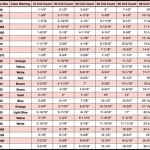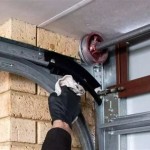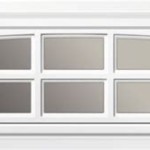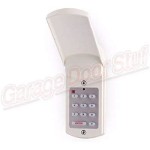How To Build Garage Cabinets and Storage
A well-organized garage can greatly enhance the functionality and usability of a home. Garages often become repositories for tools, equipment, seasonal items, and general clutter. Implementing a robust storage system, particularly through the construction of garage cabinets, is a crucial step in maximizing garage space and maintaining an orderly environment. This article provides a detailed guide on building garage cabinets and optimizing storage solutions.
Planning and Design
Before commencing any construction, a thorough planning phase is essential. This involves assessing the existing garage space, identifying storage needs, and designing cabinets that meet those requirements.
Begin by taking precise measurements of the garage. Consider the available wall space, ceiling height, and any obstructions such as windows, doors, or utilities. Documenting these measurements is crucial for creating accurate cabinet designs.
Next, evaluate the specific storage needs. Determine the types of items that will be stored in the cabinets. This will influence the size, configuration, and weight-bearing capacity of the cabinets. For example, storing heavy tools will necessitate stronger cabinet construction and shelving.
Develop cabinet designs that optimize the available space and cater to the identified storage needs. Consider various cabinet configurations, such as wall-mounted cabinets, base cabinets, and tall cabinets. Wall-mounted cabinets free up floor space, which can be beneficial for smaller garages. Base cabinets provide a stable platform for countertops and work surfaces. Tall cabinets offer ample vertical storage for larger items.
Sketch out the cabinet designs, including dimensions, shelf placement, and door or drawer configurations. Consider using design software to create more detailed and professional-looking plans. Ensure the designs comply with local building codes and regulations.
Finally, create a comprehensive materials list based on the cabinet designs. This will help in accurately estimating the project cost and ensuring that all necessary materials are readily available.
Materials and Tools
Selecting the appropriate materials and tools is critical for building durable and functional garage cabinets. The choice of materials will impact the cabinet's strength, appearance, and resistance to environmental factors such as moisture and temperature fluctuations.
Plywood is a commonly used material for cabinet construction due to its strength, stability, and affordability. Opt for plywood grades that are suitable for garage environments, such as exterior-grade plywood or marine-grade plywood, which offer increased resistance to moisture. Consider the thickness of the plywood based on the weight of the items that will be stored. Thicker plywood is generally required for heavier items.
Solid wood can be used for cabinet frames, doors, and drawer fronts. Hardwoods such as oak, maple, or birch are durable and aesthetically pleasing but can be more expensive than softwoods. Softwoods such as pine or fir can be used for less critical components or if cost is a primary concern.
Hardware is an essential component of cabinet construction. Select high-quality hinges, drawer slides, handles, and knobs that are appropriate for the size and weight of the cabinets and their contents. Consider using self-closing hinges for added convenience and safety.
Fasteners, such as screws, nails, and wood glue, play a crucial role in securing the cabinet components. Use screws that are long enough to penetrate the wood adequately but not so long that they protrude through the other side. Wood glue should be applied liberally to all joints to create a strong and durable bond.
A variety of tools are required for building garage cabinets, including a circular saw, jigsaw, drill, sander, and measuring tools. A circular saw is essential for cutting plywood and solid wood to the required dimensions. A jigsaw is useful for making curved cuts or intricate shapes. A drill is needed for drilling pilot holes and driving screws. A sander is used to smooth the surfaces of the wood and prepare them for finishing. Measuring tools, such as a tape measure, level, and square, are crucial for ensuring accuracy and precision.
Construction Process
The construction process involves cutting the lumber, assembling the cabinet boxes, installing the doors and drawers, and finishing the cabinets. Attention to detail and adherence to the design plans are essential for creating cabinets that are both functional and aesthetically pleasing.
Begin by cutting the plywood and solid wood to the dimensions specified in the design plans. Use a circular saw with a sharp blade to ensure clean and accurate cuts. Take care to avoid splintering and tear-out. Use a jigsaw for any curved cuts or intricate shapes. Double-check all measurements before cutting.
Assemble the cabinet boxes using screws, wood glue, and clamps. Ensure that the corners are square and the joints are tight. Use a level to ensure that the cabinet boxes are plumb. Allow the wood glue to dry completely before proceeding to the next step.
Install the doors and drawers. Measure and cut the door and drawer fronts to the appropriate sizes. Attach the hinges to the door frames and the cabinet boxes. Install the drawer slides to the drawer boxes and the cabinet boxes. Ensure that the doors and drawers open and close smoothly. Adjust the hinges and drawer slides as necessary.
Finish the cabinets to protect the wood and enhance their appearance. Sand all surfaces of the cabinets to create a smooth and even finish. Apply a primer to the cabinets to seal the wood and provide a base for the paint or stain. Apply two or three coats of paint or stain, allowing each coat to dry completely before applying the next. Consider using a clear coat to protect the finish and make the cabinets more durable.
Install the hardware, such as handles and knobs. Position the hardware according to the design plans. Use a drill to create pilot holes for the screws. Secure the hardware tightly.
Install the shelves inside the cabinets. Cut the shelves to the appropriate dimensions. Use shelf supports to hold the shelves in place. Consider using adjustable shelf supports to allow for flexibility in shelf placement.
Mount the cabinets to the wall using appropriate fasteners. Ensure that the cabinets are securely attached to the wall studs. Use a level to ensure that the cabinets are level. Adjust the mounting hardware as necessary.
Finally, organize the storage and utilize the newly constructed cabinets. Place heavy items on the lower shelves and lighter items on the upper shelves. Label the cabinets to make it easier to find items. Consider using bins and containers to organize smaller items.
Enhancing Garage Storage
Beyond building cabinets, various strategies and accessories can further enhance garage storage. These include wall-mounted organizers, overhead storage racks, and specialized storage solutions for specific items.
Wall-mounted organizers are a versatile and space-saving solution for storing tools, equipment, and other items. Pegboards, slatwall panels, and track systems can be used to create customizable storage walls. These systems allow for the easy attachment and rearrangement of hooks, shelves, bins, and other accessories.
Overhead storage racks maximize the use of vertical space in the garage. These racks are typically suspended from the ceiling and can be used to store bulky items such as seasonal decorations, sporting equipment, and storage totes. Ensure that the overhead storage racks are securely attached to the ceiling joists and that the weight capacity is not exceeded.
Specialized storage solutions are available for specific items such as bicycles, ladders, and garden tools. Bicycle racks can be mounted to the wall or ceiling to store bicycles vertically. Ladder hooks can be used to hang ladders on the wall. Garden tool organizers can be used to store rakes, shovels, and other garden tools.
Utilizing rolling carts or workbenches with integrated storage adds mobility and flexibility to the garage workspace. Rolling carts can be used to transport tools and materials to different areas of the garage. Workbenches with drawers and cabinets provide a convenient storage solution for tools and supplies.
Implementing a regular decluttering and organization routine is essential for maintaining an orderly garage. Set aside time periodically to sort through the items in the garage and remove any items that are no longer needed. Donate or sell unwanted items. Organize the remaining items in a logical and efficient manner.

Diy Garage Cabinets How To Build

A Better Way To Build Upper Shop Garage Cabinets

Diy Garage Cabinets And Miter Saw Station Jenna Sue Design

Diy Garage Cabinets How To Build

5 Diy Garage Cabinets Modular Shop Storage System Fixthisbuildthat

How To Build A Giant Diy Garage Cabinet Family Handyman

Diy Garage Cabinets For Shop Organization

Diy Garage Cabinets And Miter Saw Station Jenna Sue Design

How To Build A Giant Diy Garage Cabinet Family Handyman

5 Diy Garage Cabinets Modular Shop Storage System Fixthisbuildthat
See Also








